Welcome back to ‘Filthy Labs’! I don’t really need a lot of words to introduce what this blog post is about, as the title is rather self explanatory. So welcome to the interesting, and microscopic world of the typewriter – under a somewhat dodgy and cheap 60X microscope.
Type Stubs

A filthy type slug. Notice the ‘ribbons’ of filth being pushed out the sides of the letter in a stream?
Crinkle Paint.
I observed previously that the Orbis, Orbis-Olympia and Olympia SM1typewriters all have different grades of surface texture on them, so I decided to put them all under the Microscope to have a closer look.
Ribbons
MISC.

The strike point on the segment’s anvil, where the type bar has worn into the metal over many years of typing.

The textured section of the Olivetti Valentine cover-plate, which has attracted substantial amounts of dirt.
These are just some quick pictures I took of my collection while I’m still trying to get to grips with his this thing works. I’m expecting some better results down the track as I master it. That said, it is pretty much just a toy microscope, which cost me a whopping $5.77 Australian – posted from China. It attaches to the back of my mobile phone with a specially made case, and has its own switchable light source that goes from bright white LED to back-light.
And we all know how much I love my black-light!
I’ve already started to see some interesting results from using the black-light, but more about that soon.

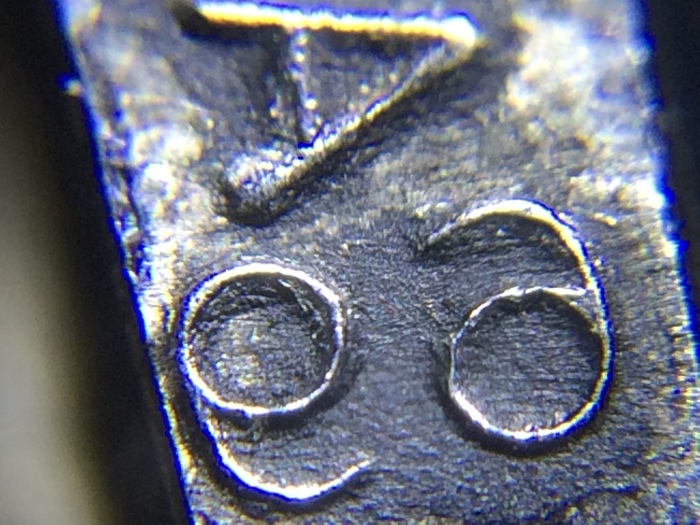
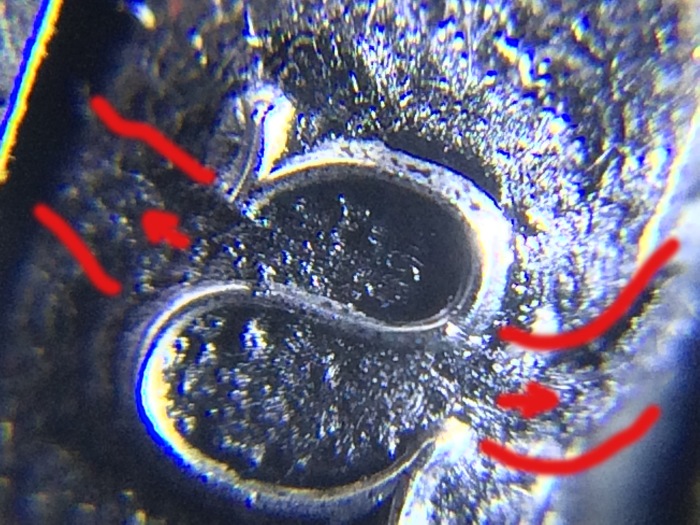
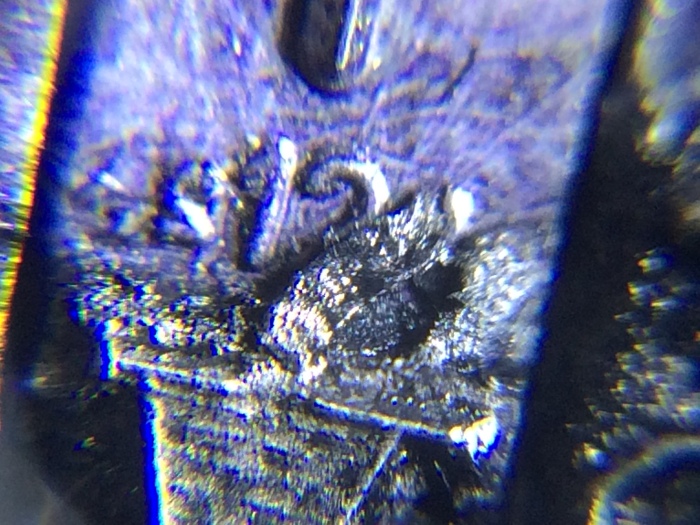

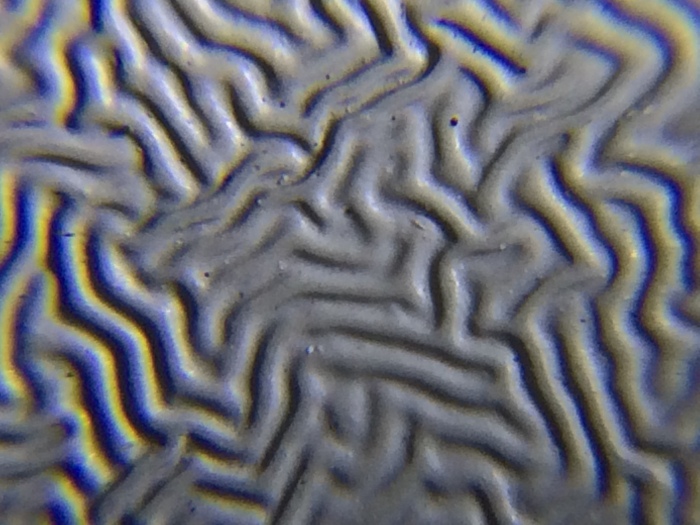
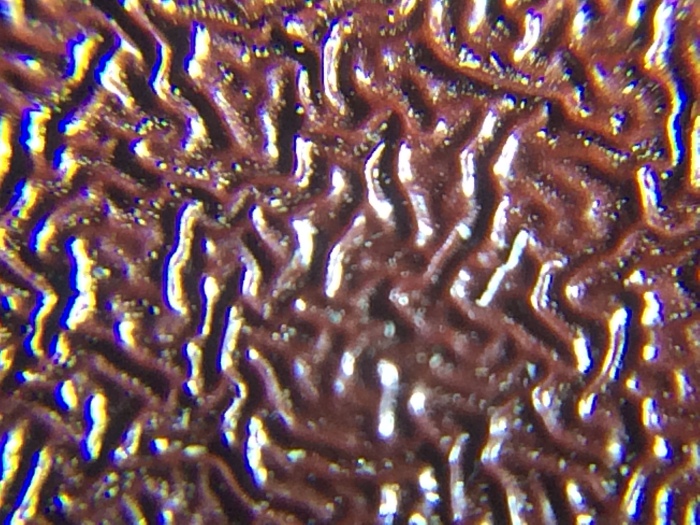

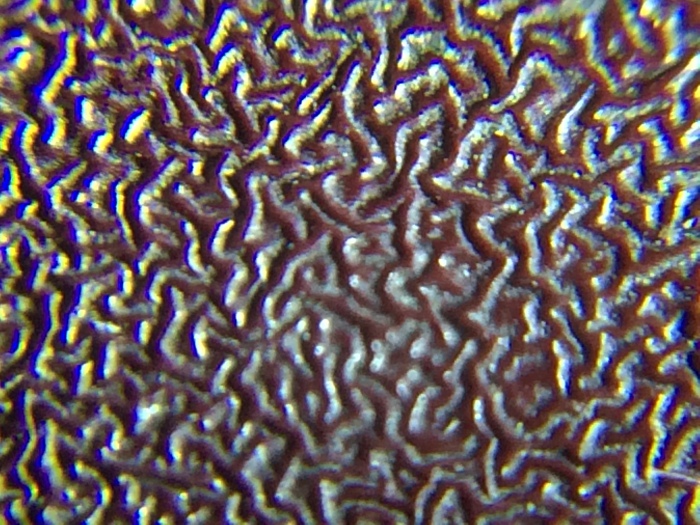
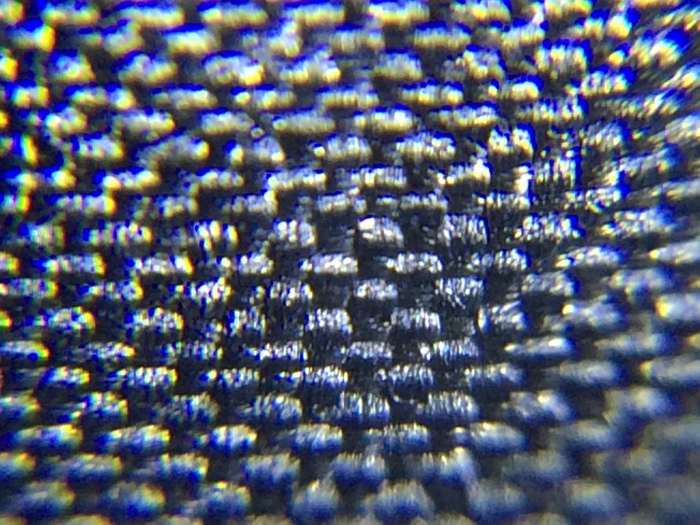
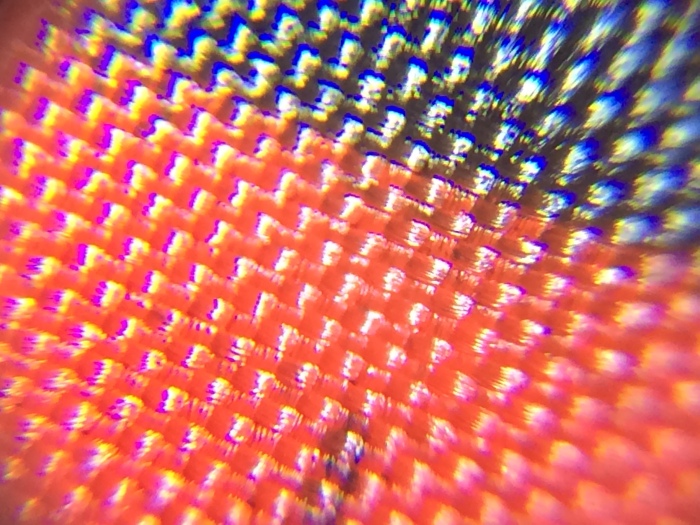

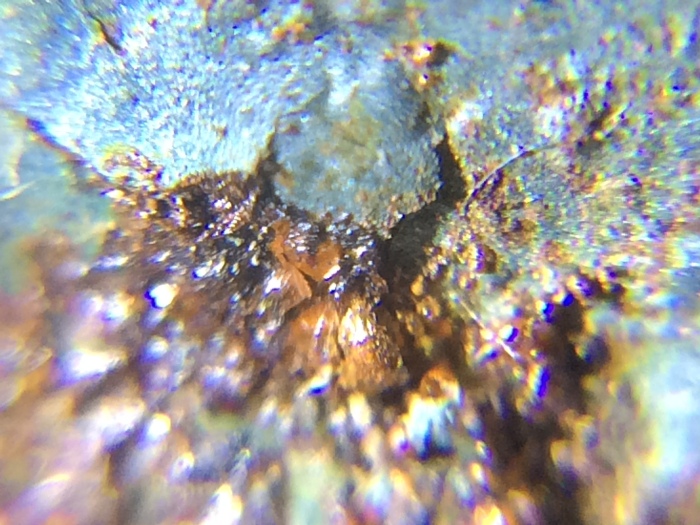
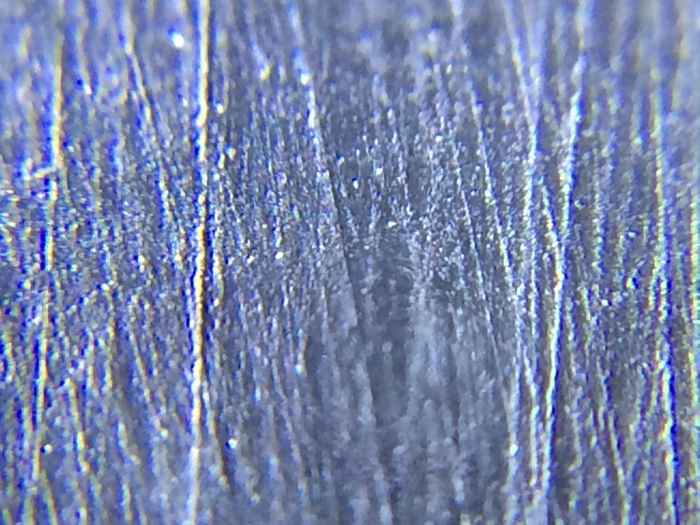

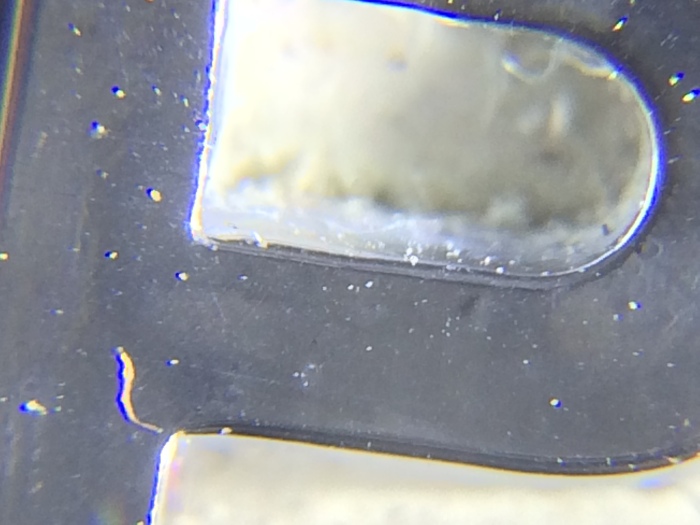
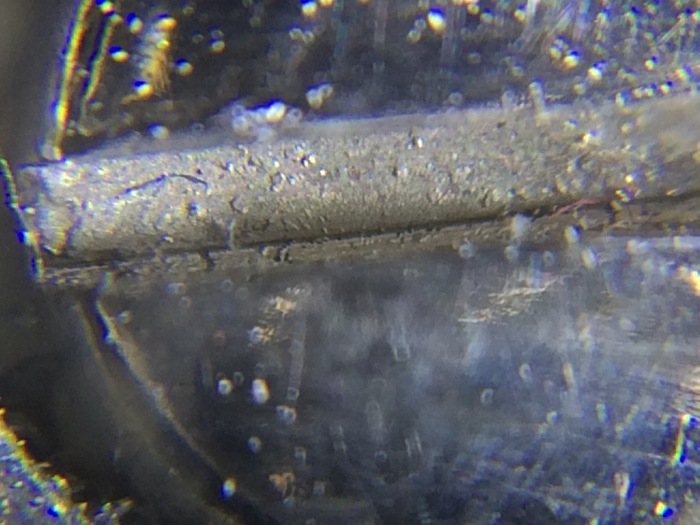
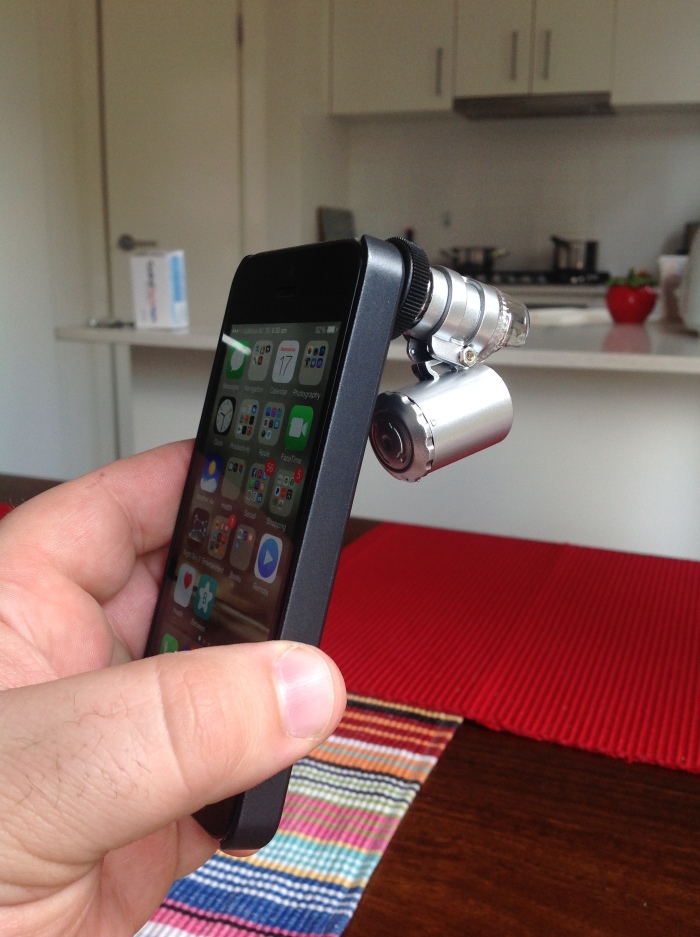


Fascinating — and that iPhone microscope is amazingly good for such a cheap and little thing!
LikeLike
Yeah. I’m geek ing out on the cheap!
LikeLike
Very interesting… Might have to pick one of these up for use at school 🙂
LikeLike
That’s an awful lot of design, machining, and transport for ≈ $6! The result are definitely interesting. You have good ideas, Scott.
LikeLike
Really, it is just a plastic tube with a lens and a switchable torch bolted to the side. But cheap it is indeed, considering the results.
LikeLike
These are fascinating Scott, really like the ‘otherworldliness’ in the pictures. Crinkle paint = brain coral!
LikeLike
I love that description!
LikeLike
Wonderful pictures. I’m going to have so much fun with the one I just bought… shipping from the USA even!
The crinkle paint differences, especially, I want to look into. I want to know what texture makes the blackest blacks.
LikeLike
Interesting idea. I’ll compare a few of my other machines as soon as I can.
LikeLike
That looks like fun!
LikeLike
Ha ha ha. In a geek-out kinda way.
LikeLike
Typewriter CSI, brought to you by Filthy Labs 😀
LikeLike
Yep…. Keeps me entertained!
LikeLike
That is super cool, Scott!! Very neat. That extruded filth is very interesting.
LikeLike
Thanks man! I certainly found that part interesting myself. Loved the idea of slimy old ink being pushed out on every keystroke.
LikeLike
Wow! What an interesting and slightly eccentric way of looking at typewriters! It’s like visiting an alien world. Lucky we can breathe-in the typosphere. 🙂
LikeLike
Ha ha. This is true. I’m always looking for interesting ways to use these machines.
LikeLike
That’s very cool! Thanks for sharing it
LikeLike
Anytime. Thought people may be interested.
LikeLike
great stuff. What’s next, ultra high-speed photography of a typer in action?
LikeLike
I’ve done a few tries with the 120 frame a second slow-mo that I have, but sadly it is too slow to be worth-while. But that is something I have indeed contemplated. Next? Blacklights!
LikeLike
Not such a wild idea, Rino, when I worked for Imperial in London, the head mechanic was working on an Imperial Electric, just like the Imp 66 but bigger and much heavier. He told me that they were having problems with keys clashing and that they were currently using a high speed camera to try to solve the problem.
LikeLike
Now that is a very interesting fact, John! See… sometimes these odd things I try actually have a purpose. Now… I wonder where I can get a 10,000 frame a second camera.
LikeLike
Pingback: Typewriters, Up Close And Personal | Wrong Way, Write Way
Pingback: Shenzhen – The wild frontier no more? | The Filthy Platen
Pingback: Shenzhen – The wild frontier no more?
Awesome content, thanks for sharing!
LikeLike